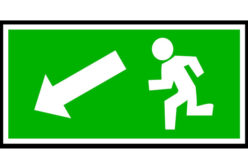Improper stacking can lead to damaged goods, accidents, and costly delays. Fortunately, by following a few straightforward practices, businesses can vastly improve their load-stacking approach. This guide explores the best practices for stacking loads in warehouses and trucks.
Use Proper Equipment
Investing in the right equipment sets the stage for effective load stacking. Forklifts, pallet jacks, and reach trucks are essential tools for many warehouse environments, helping to lift and place loads safely. Before using any equipment, inspect it thoroughly to ensure its functionality and prevent operational failures. For example, using forklifts optimized for specified load weights reduces the risks associated with stacking. Training operators on how to use these tools increases safety and boosts efficiency.
Businesses should empower their teams with hands-on training and up-to-date certifications for operating warehouse machinery. By equipping workers with the proper tools and skills, teams can focus on stacking more efficiently and safely.
Consider Load Weight Distribution
Strategic weight distribution is a key component of proper stacking. Start by placing heavier items at the base of the stack to create stability. Lighter items go on top to prevent toppling or shifting during transport. Weight imbalances can create hazardous conditions, especially when distributing cargo in trucks for long-haul deliveries. For example, inconsistent weight placement inside a truck can lead to uneven tire wear or even accidents during handling.
By following a structured plan for weight placement, employees reduce these risks significantly. Mark load weights clearly so handlers understand how to arrange pieces without unnecessary confusion. Adhering to this approach improves efficiency while protecting employees from potential hazards.
Secure Loads Effectively
A no-load stack isn’t complete if it isn’t firmly secured. Even the best stacking arrangement can shift or collapse without proper precautionary measures. Start by using materials like straps, shrink wrap, or bands to stabilize the load. Tighten these materials to eliminate excess movement. Pallets should be used for stacking wherever possible, as they prevent direct pressure on goods and streamline handling processes. Wrapping layers multiple times often provides additional grip and reduces shifting during movements.
During truck transportation, utilize load bars and ratchet straps. This approach minimizes movement within transport vehicles, helping to avoid product damage. Precise load stacking can help protect against damage, but additional measures provide an extra layer of protection that significantly lowers risks.
Prioritize Safety Every Step of the Way
Effective load stacking requires a commitment to safety for both employees and goods. Consistently applying the right tools, paying attention to weight distribution, and securing every load help prevent accidents and minimize disruptions to operations. These practices promote better efficiency and longer product lifespans while creating a safer work environment for both warehouse staff and truck drivers.
By taking the time to integrate these practical steps into your process, operations become smoother, and risks become easier to manage. Start building your safer stacking system today by equipping your teams with reliable training, high-quality tools, and a focus on balance and security. It’s time to take proper stacking seriously and raise the bar for safety and efficiency.
Image Credentials: Siwakorn1933, #331580790
end of post … please share it!
-------------------------------------------------------------------------------------------------------------
-------------------------------------------------------------------------------------------------------------
home remodeling reference (links to internal page)
 |
 |
 |
 |
| directory | photos | forms | guide |
Helpful article? Leave us a quick comment below.
And please share this article within your social networks.











